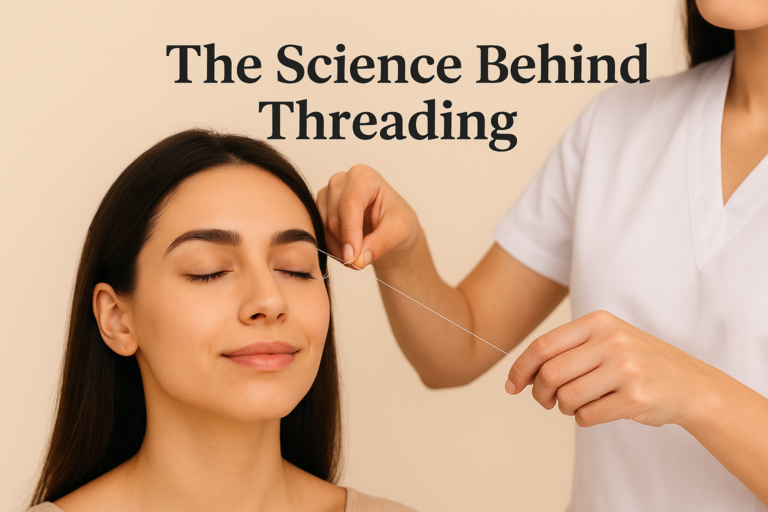Waxing can be an effective and long-lasting hair removal method, but it can also leave your skin feeling irritated, sensitive, and red. Post-wax care is essential to soothe your skin and promote healing. Fortunately, there are many natural remedies that can calm, hydrate, and restore your skin after waxing, without the need for harsh chemicals or artificial products. Here’s a detailed guide on the best natural ways to soothe your skin post-waxing: “tips for body waxing or body waxing services. this blog will explain The Best Natural Ways to Soothe Your Skin Post Waxing
Keeping Body Waxing Experience less irritating & more effective:
1. Aloe Vera: The Ultimate Skin Soother
Waxing eliminates hair from the root, which is one of the main reasons it works so well. This procedure makes the skin smoother for a longer amount of time while delaying regrowth. Hair is shaved near the surface, so it grows back quickly and frequently feels spiky after shaving. Waxing, on the other hand, removes the hair from the follicle, causing it to grow back more slowly.
- Why It Works: Aloe vera is renowned for its anti-inflammatory, cooling, and moisturizing properties. It helps reduce redness, swelling, and irritation, making it ideal for post-wax care.
- How to Use: Apply fresh aloe vera gel directly from the plant or use a pure aloe vera gel from the store (without added fragrances or alcohol). Gently massage it into the skin and let it absorb. Reapply as needed throughout the day.
Coconut Oil: Moisturize and Nourish
- Why It Works: Coconut oil is packed with fatty acids and antioxidants, which help to hydrate and soothe irritated skin. It also has antimicrobial properties, preventing any potential infections post-waxing.
- How to Use: After waxing, apply a thin layer of organic coconut oil to the treated area. It can be massaged gently for a calming effect. You can also leave it on overnight for deep hydration.
3. Chamomile Tea Compress: Calm Redness and Inflammation
- Why It Works: Chamomile is known for its anti-inflammatory and antioxidant properties. It can help reduce swelling, soothe irritated skin, and promote healing.
- How to Use: Brew a chamomile tea bag and allow it to cool. Once it’s cool enough, dip a clean cloth into the tea and gently press it against your skin for 10-15 minutes. This compress will calm the redness and provide a cooling effect.
4. Tea Tree Oil: Natural Antiseptic
- Why It Works: Tea tree oil is a powerful natural antiseptic with antimicrobial properties that can help prevent ingrown hairs and infection. It also has anti-inflammatory benefits to calm the skin.
- How to Use: Dilute tea tree oil with a carrier oil (such as coconut or olive oil) in a 1:9 ratio (1 drop of tea tree oil to 9 drops of carrier oil). Gently apply the mixture to the waxed area with a cotton ball. Avoid applying undiluted tea tree oil, as it can be too harsh on the skin.
5. Witch Hazel: Reduce Redness and Irritation
- Why It Works: Witch hazel is a natural astringent, which helps tighten the skin and reduce inflammation and redness. It also has antimicrobial properties, which can help prevent post-wax breakouts.
- How to Use: Soak a cotton pad with witch hazel extract and gently apply it to the waxed area. Let it air dry. You can repeat this process 2-3 times a day until the skin feels soothed.
6. Honey: Hydrate and Heal
- Why It Works: Honey is a natural humectant, meaning it draws moisture into the skin and helps keep it hydrated. It also has antibacterial properties, which promote healing and reduce the risk of infection.
- How to Use: Apply a thin layer of raw, organic honey to the waxed area and leave it on for about 15-20 minutes before rinsing off with warm water. Honey can also be mixed with other soothing ingredients like yogurt for a hydrating mask.
7. Oatmeal Bath: Soothe and Relieve Itchiness
- Why It Works: Oatmeal is known for its ability to relieve skin irritation and itching. It contains compounds like avenanthramides, which have anti-inflammatory properties.
- How to Use: For an oatmeal bath, grind 1 cup of organic oats into a fine powder and add it to warm bath water. Soak for 10-15 minutes. Alternatively, you can make an oatmeal paste by mixing oats with water or milk and applying it to the affected area for 10 minutes before rinsing off.
8. Lavender Oil: Calm and Relieve Pain
- Why It Works: Lavender oil is known for its calming and relaxing properties. It can help reduce pain and inflammation, promote healing, and leave your skin feeling soothed.
- How to Use: Dilute lavender essential oil with a carrier oil (like almond or coconut oil) and gently massage it into the waxed area. Lavender oil can also be added to a warm bath to help calm the skin and relieve discomfort.
9. Cucumber: Hydrate and Cool
- Why It Works: Cucumber is naturally cooling and hydrating, helping to reduce swelling, redness, and irritation. It also has a mild astringent effect, which helps tighten the skin.
- How to Use: Slice a chilled cucumber and place the slices directly onto the skin for 10-15 minutes. Alternatively, you can blend cucumber into a paste and apply it as a cooling mask.
10. Cold Compress: Immediate Relief
- Why It Works: A cold compress is a simple yet effective way to immediately reduce redness, swelling, and irritation caused by waxing. The cold helps constrict blood vessels and calm the skin.
- How to Use: Wrap a few ice cubes in a clean cloth or use a cold gel pack. Apply to the waxed area for 5-10 minutes. Be sure not to apply ice directly to the skin, as this can cause damage.
General Tips for Post-Wax Care:
- Avoid Heat and Sun Exposure: After waxing, your skin may be more sensitive to the sun. Avoid direct sunlight, hot showers, saunas, or tight clothing that could rub against the waxed area.
- Don’t Touch or Scratch: Resist the urge to touch, scratch, or pick at your skin after waxing, as this can cause irritation or infection.
- Hydrate: Drinking plenty of water helps to keep your skin hydrated from the inside, which can speed up the healing process and keep your skin soft.
- Exfoliate Gently After a Few Days: After a few days, once any irritation has subsided, exfoliating the area gently can help prevent ingrown hairs.
Conclusion:
Taking care of your skin post-waxing is crucial to reducing irritation, inflammation, and discomfort. By using natural remedies like aloe vera, coconut oil, chamomile, and lavender, you can keep your skin calm, nourished, and hydrated. These natural solutions are gentle on the skin and can help promote faster healing, leaving you with smooth and beautiful skin.








